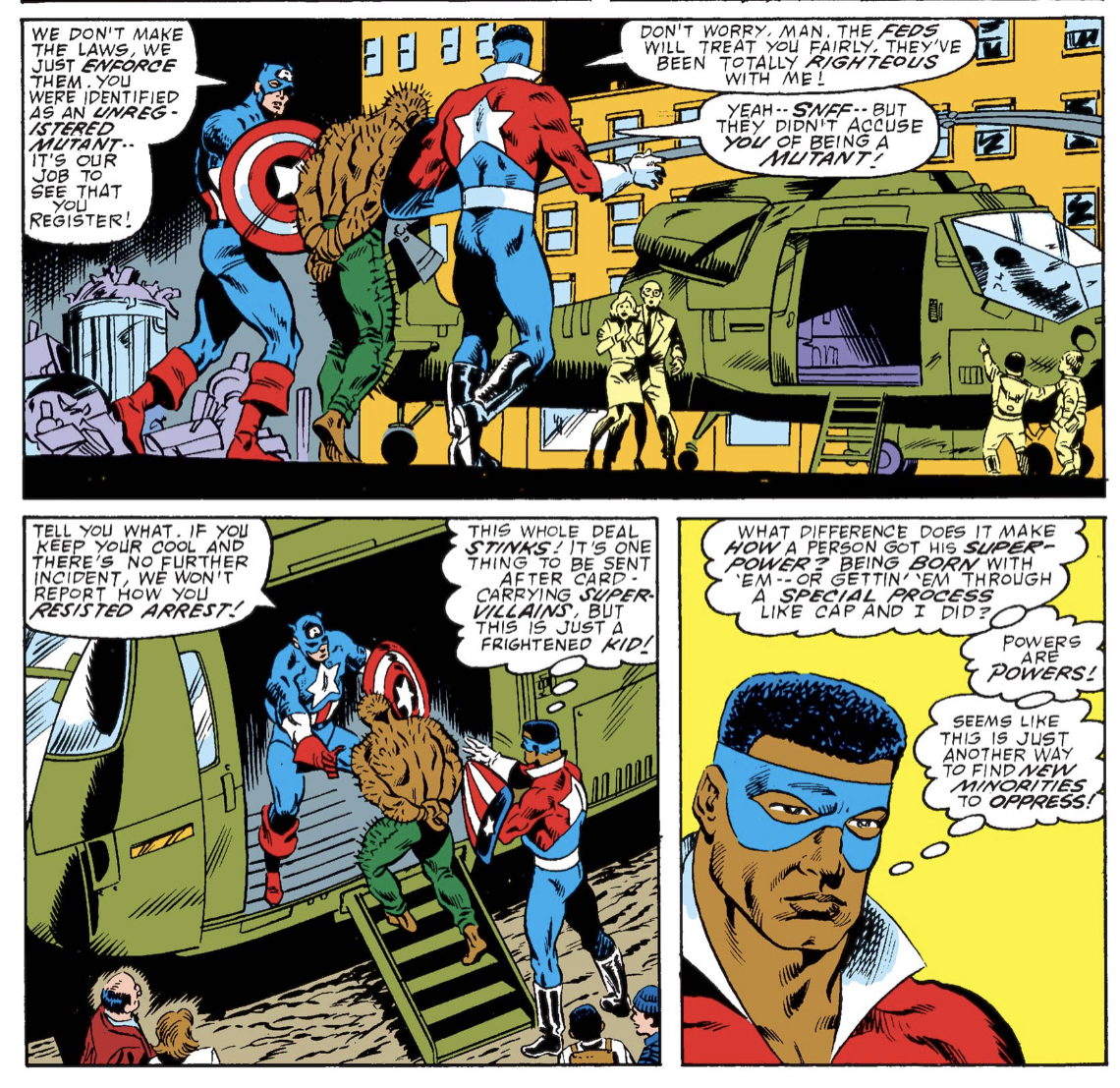'The Falcon and the Winter Soldier': Who is Battlestar?
A sidekick who always deserved better.

This post contains mild spoilers for The Falcon and the Winter Soldier.
The Falcon and the Winter Soldier's creative minds have made it a point to stress how this series will examine what it’s like to be a Black man in America. It’s about time Sam Wilson was given a vehicle — albeit shared with a brainwashed ex-HYDRA assassin — to bring his character more depth outside of his relationship with Steve Rogers and the Captain America mantle. He’s more than just the Black side-kick — an apparent running theme when white guys hold the shield. When John Walker picked up Captain America's shield, he was appointed his very own Black side-kick, Lemar Hoskins, aka Battlestar. Last week's episode, "The Star-Spangled Man", just gave him the same canonical introduction.
Lemar Hoskins — created by Mark Gruenwald and Paul Neary — first appeared in Captain America #323 as a nameless member of the Bold Urban Commandos. He appeared again four issues later as Lemar but was still interchangeable with the other Bold Urban Commando members. He then underwent the same superhuman augmentation as the Super Patriot, John Walker. Lemar doesn’t become a distinguishable character until Captain America #334 — but with the ill-thought-out codename Bucky. While it's clear the name was given to him as an alias to debut alongside the new Captain America like a Bucky Barnes 2.0 — the word "buck" is and was a derogatory term when referencing a Black man. Dwayne McDuffie pointed this out to Mark Gruenwald, which prompted the codename change to Battlestar. In the issue that introduces Lemar as Battlestar, he explains why "buck" was an unacceptable code name for a Black man — a stark departure from how Gruenwald actually came to find out himself.
MORE: Check out all the Marvel movies in order
Also: Disney+ on Apple TV
Even with the name change, Lemar Hoskins was treated like most characters brought in as support to the series lead — especially among Black characters in comics — a loyal yes man. He rarely challenged Walker and or what he did himself as a superhero employed by the Commission of Superhuman Abilities.
There are few moments in which Battlestar’s inner musings question what he is doing and why. When he and John Walker are working to track down unregistered mutants for the commission, Lemar questions why someone born with their powers should be treated any different from someone who got their powers through some other means like him. Lemar draws comparisons to how racial identities are used as motivation to oppress others and how this is no different, but this is about as far as his musings go. There isn’t much to know about Lemar Hoskins outside of his fierce loyalty to John Walker — a guy who let him get hanged from a tree while hoping his neck muscles were strong enough to survive the hate crime.

Even after Walker’s time as Captain America and into his time as U.S. Agent, it’s more of the same for Hoskins. When Battlestar appears in the Silver Sable and the Wild Pack series, he has limited autonomy. He actually has some pretty cringe-worthy dialogue when interacting with other Black people. He is often more vocal in those instances than with the racist he is on the team with – who is loud and proud about being one.
The latest updates, reviews and unmissable series to watch and more!
At one point in the series, Hoskins tells another Black character he and his gangs' behavior made things hard for other Black people. Because the exceptional negro rhetoric is "helpful" in how you fight against your oppressors — but what more can you truly expect from a character like Battlestar? Hoskins exists as just another Black side character on a team, providing minimal views or actions regarding matters that greatly affect him and other Black people he encounters in his missions as a Wild Pack member.
His limitations as a character have everything to do with the writers. After all, Gruenwald had him going by an offensive codename for several issues before being informed by a Black peer of the word’s history. There is an opportunity to explore what makes Lemar Hoskins who he is outside of being the Black friend of John Walker now that the character exists in the MCU. Especially with his similarities to Sam Wilson and their proximity to the Captain America mantle. There is an inherently complicated relationship working for a system that upholds and carries out the oppression you and people who look like you face daily. Lemar Hoskins deserves at the very least a more nuanced lens in the same way that Sam Wilson does. Hopefully, at least one of them receives it.

